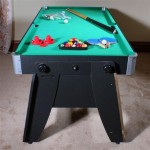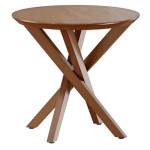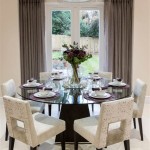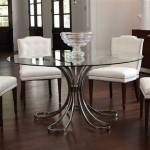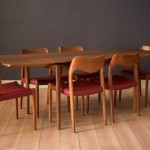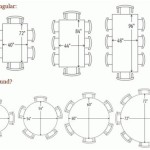Cast Iron Glass Coffee Table: A Fusion of Strength and Sophistication
The cast iron glass coffee table represents a distinct blend of industrial resilience and modern elegance. Combining the robust nature of cast iron with the sleek transparency of glass, these tables function as both practical furniture pieces and eye-catching design elements. The synergy between these materials offers a unique aesthetic that complements a range of interior design styles, from the rustic and industrial to the contemporary and minimalist.
The appeal of a cast iron glass coffee table stems from its inherent duality. Cast iron, known for its durability and weight, provides a solid and stable base. This foundation often features intricate designs, evoking a sense of history and craftsmanship. Glass, on the other hand, introduces a light and airy quality, allowing visibility and creating a sense of spaciousness. The contrasting textures and properties of these materials create a visually engaging piece that can become a focal point in any living space.
The Enduring Strength of Cast Iron
Cast iron has been a material of choice for centuries, prized for its strength, durability, and ability to be molded into intricate shapes. Its use in furniture dates back to the Victorian era, where it was often employed in elaborate garden furniture and decorative elements. The material's inherent weight ensures stability, making it ideal for supporting a glass tabletop. Furthermore, cast iron is relatively resistant to wear and tear, ensuring the longevity of the coffee table.
The manufacturing process of cast iron involves melting iron ore and pouring it into molds. This process allows for the creation of highly detailed designs, ranging from simple geometric patterns to elaborate floral motifs. The finished cast iron is typically coated with a protective finish, such as paint or powder coating, to prevent rust and enhance its aesthetic appeal. This protective layer also adds to the material's durability, making it suitable for everyday use.
The weight of cast iron, while contributing to its stability, can also be a consideration when choosing a coffee table. These tables can be quite heavy, making them difficult to move. Therefore, it is important to consider the table's final placement and ensure that the flooring can support its weight. However, the weight also contributes to the table's feeling of solidity and permanence, which is a desirable quality for many homeowners.
The Allure of Glass Tabletops
Glass tabletops bring a touch of modern sophistication to the cast iron base. Their transparency allows for an unobstructed view of the base's design, showcasing the intricate details of the cast iron. Glass also reflects light, creating a brighter and more open feel in the room. The smooth surface of the glass contrasts beautifully with the textured surface of the cast iron, adding to the table's visual appeal.
The type of glass used in these coffee tables is typically tempered glass. Tempered glass is significantly stronger than standard glass and is designed to shatter into small, relatively harmless pieces if broken. This safety feature is particularly important for furniture pieces like coffee tables, which are often located in high-traffic areas. The thickness of the glass also contributes to its strength and durability. Thicker glass is less likely to scratch or chip and can withstand heavier loads.
Cleaning a glass tabletop is relatively simple, requiring only a damp cloth and glass cleaner. Regular cleaning will help to maintain the glass's clarity and prevent the build-up of dust and fingerprints. While glass is generally resistant to staining, it is important to wipe up spills promptly to prevent any potential damage. The combination of ease of maintenance and aesthetic appeal makes glass a popular choice for coffee table tops.
Design Versatility and Style Integration
Cast iron glass coffee tables are remarkably versatile and can be incorporated into a wide range of interior design styles. Their industrial aesthetic makes them a natural fit for loft apartments and urban dwellings. When paired with leather sofas and exposed brick walls, these tables enhance the raw and edgy feel of industrial design. However, their inherent elegance also allows them to blend seamlessly into more refined settings.
In contemporary interiors, a cast iron glass coffee table can serve as a striking contrast piece, adding a touch of character and texture to an otherwise minimalist space. The glass tabletop complements clean lines and simple forms, while the cast iron base introduces an element of visual interest. In more traditional settings, these tables can be styled with antique accessories and plush rugs to create a sense of timeless elegance. The contrast between the old-world charm of the cast iron and the modern simplicity of the glass can create a harmonious and balanced aesthetic.
The choice of finish for the cast iron base can also significantly impact the table's overall style. A black or dark gray finish is often associated with industrial and modern design, while lighter finishes, such as antique white or brushed silver, can lend a more traditional or vintage feel. The shape of the cast iron base can also vary, ranging from simple geometric forms to ornate scrollwork, allowing homeowners to choose a table that perfectly complements their existing décor.
The shape of the glass tabletop also contributes to the overall design aesthetic. Round tabletops soften the hard lines of the cast iron base, creating a more inviting and approachable feel. Square or rectangular tabletops, on the other hand, reinforce the table's geometric structure and create a more formal and structured look. The size of the tabletop should also be considered in relation to the size of the room and the surrounding furniture. A larger tabletop provides more surface area for entertaining and displaying items, while a smaller tabletop is better suited for smaller spaces.
The height of the coffee table is another important factor to consider. Ideally, the coffee table should be approximately the same height as the seat cushions of the sofa or chairs that surround it. This allows for easy access to drinks and snacks and creates a more comfortable and functional seating arrangement. The height of the cast iron base can often be adjusted to accommodate different sofa heights.
Ultimately, the cast iron glass coffee table is a testament to the enduring appeal of classic materials and timeless design. Its combination of strength, elegance, and versatility makes it a valuable addition to any home. The careful consideration of materials, design, and style integration ensures that these tables will remain a cherished part of the interior landscape for years to come. The fusion of the robust cast iron and the refined glass offers a durable and aesthetically pleasing answer to the practical need for surface space within any living environment.
Iron Base Coffee Table With Glass Top Rf Architectural Garden Antiques

Neoclassical Style Brass And Cast Iron Coffee Table With Glass Top

J E Home 52 5 In Dark Brown Glass Table Top Coffee With Powder Coat Finish Metal Legs Gd W48742160 The

Encore Furniture Gallery Rustic Iron Cocktail Or Coffee Table With Glass Top

Twisted Wrought Iron Rope Gold Gilt Base Oval Racetrack Glass Top Coffee Table Chairish

Cocktail Coffee Tables Table Prices Rectangular

Art Deco Broe Toned Cast Iron Glass Topped Quatrefoil Coffee Table Chairish

Tuscan Style 60 Inch Round Glass Top Wrought Iron Coffee Table Bucks County Estate Traders

Twisted Wrought Iron Rope Gold Gilt Base Oval Racetrack Glass Top Coffee Table For Sale At 1stdibs With Metal

Wrought Iron Coffee Table Visualhunt

